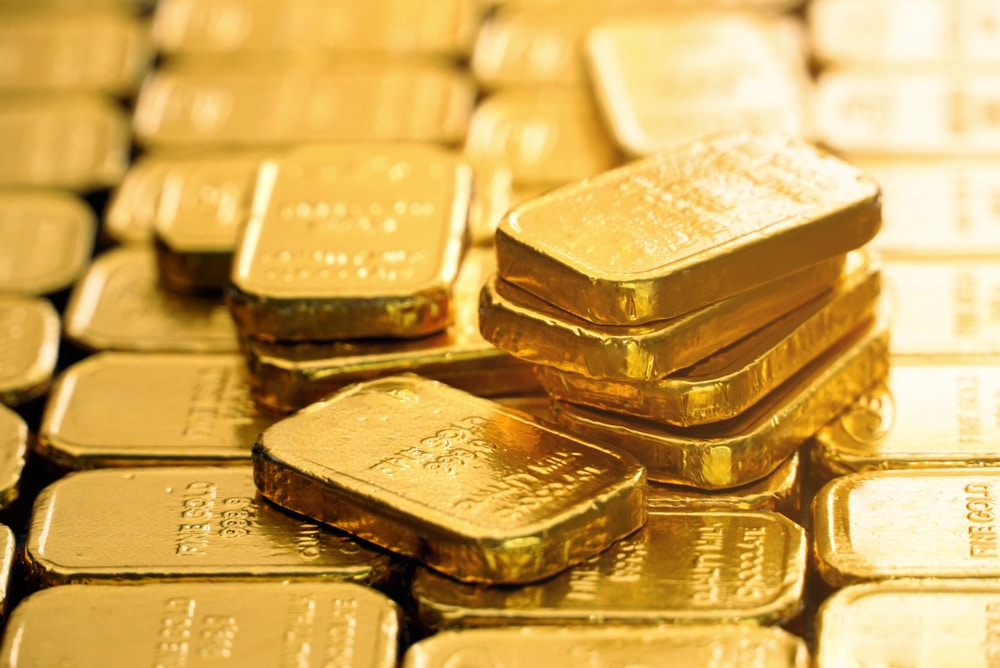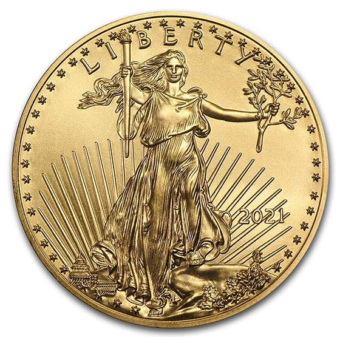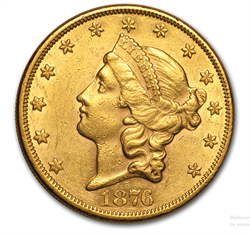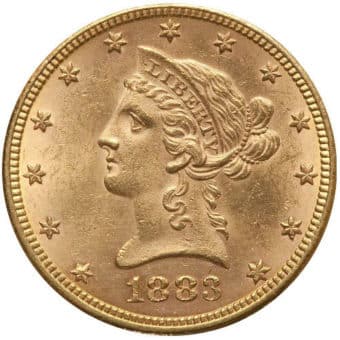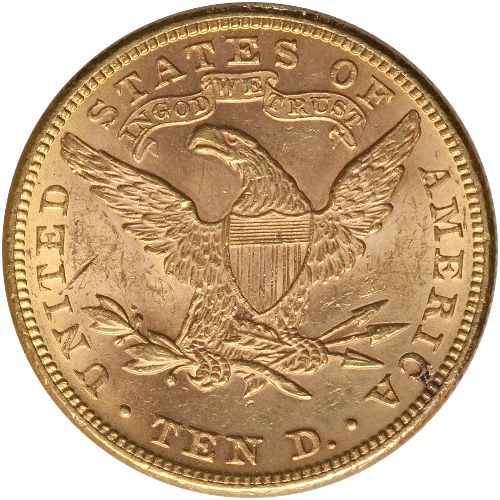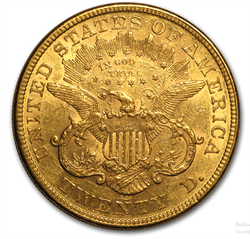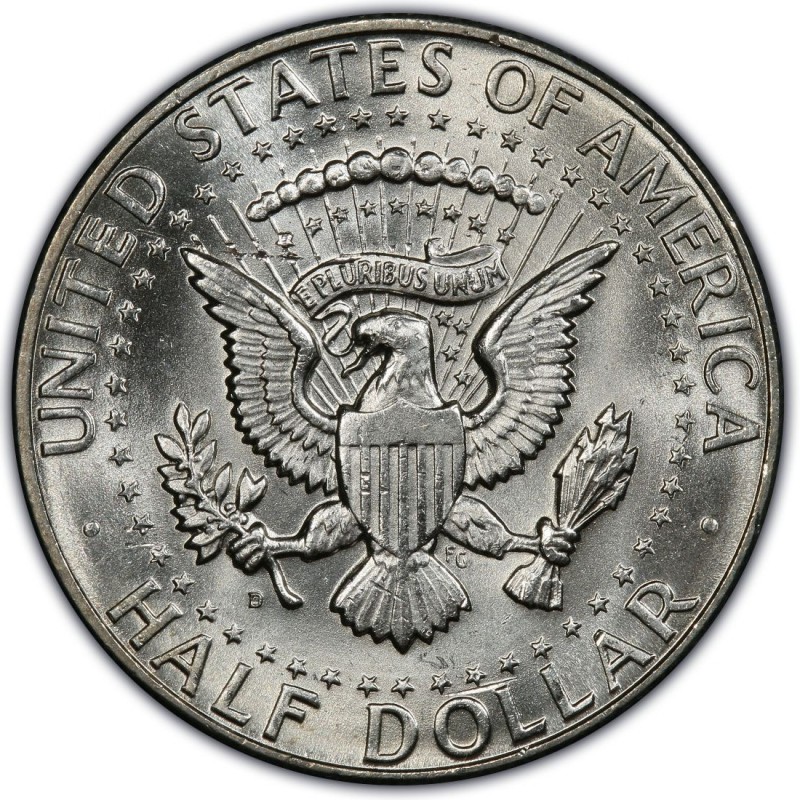Gold prices fluctuated last week amid a flurry of economic surprises, including mixed inflation reports, central bank buying, and bank downgrades. Commerzbank remains bullish on gold, but some institutions have tempered their targets. Overall, the shift in sentiment reflects what is happening in the global economy. The upcoming U.S. Retail Sales and Housing Starts reports could impact the market next week. Stay ahead of the curve and catch the full insights in this week's edition of Weekly Silver and Gold Rush!
The Gold Trail: A Daily Journey Through the Week's Market
Monday - 8.07.23: Gold prices fell as investors awaited key inflation data and a massive Treasury offering. The World Gold Council reported that solid coin and bar demand for gold was offset by a net deceleration in central bank purchases. However, the WGC still sees total demand for gold as "resolutely positive." The outlook for gold prices is uncertain in the near term, but the WGC's report suggests that there is still strong demand for gold as a safe haven asset.
Tuesday - 8.08.23: Gold prices slid as investors weighed the impact of China's sinking economy and caution ahead of inflation data. Mish Shedlock, the editor of MishTalk, offered some supportive comments on the current technical set-up for gold, suggesting that it is headed higher. He concluded by saying that investors should "hang on to" their gold if they don't have faith in central banks.
Wednesday - 8.09.23: Gold prices were level as traders took to the sidelines ahead of tomorrow's pivotal inflation report. The consensus opinion is that CPI will come in at 4.1% annualized, down sharply from June's 4.9%. China added gold to its national stockpile for the ninth straight month in July, and the World Gold Council reports that gold bar and coin investment in the Middle East reached a ten-year high in the second quarter of 2023. Commerzbank expects rate hike expectations to "disappear" during the course of the fourth quarter, which would allow gold to resume its climb and return to the $2000 level by year-end.
Thursday - 8.10.23: Gold prices traded higher as markets await today's consumer price report. Bloomberg economists say the report will reveal a wave of disinflation, driven mainly by the deteriorating economic landscape. Market analyst James Hyerczk says navigating the waters teeming with unpredictability is challenging, as certain Federal Reserve members hint at a cessation to the rate hikes, while others postulate the necessity of more hikes to curb inflation. As all eyes turn to the imminent CPI revelation, gold and silver stand sentinel, mirroring the market's faith, or the lack thereof, in the robustness of the economy.
Friday - 8.11.23: Gold's price increased slightly to $1920.23 following an unremarkable inflation report, while silver dropped to $22.76, reflecting a decrease of 6.55% since June. JP Morgan predicts gold to reach $2012 by mid-next year and $2175 by the end of 2024 due to anticipated changes in Federal Reserve policy and sustained central bank acquisitions. This trend is exemplified by Poland, which added 22.4 tonnes of gold to its reserves in July, totaling 72 tonnes since January.
Gold Reacts to U.S. Inflation Data and Consumer Sentiment Insights
Gold prices experienced some fluctuations, retreating from its gains after the U.S. Producer Price Index (PPI) rose by 0.3% in July, exceeding expectations and reviving inflationary concerns. This rise in wholesale inflation contrasted with June's stagnant reading. When excluding unstable food and energy prices, core inflation was up by 0.3%. In response to these inflation figures, gold saw a modest selloff, settling at $1914.49 an ounce, marking a 0.13% increase. Meanwhile, the University of Michigan reported that the Consumer Sentiment Index slightly decreased to 71.2, aligning with expectations, leaving gold prices nearly static. Despite a healthy consumer outlook, inflation expectations lingered above the Federal Reserve's 2% target, with a forecast of 3.3% by August 2023, underscoring the lingering inflationary pressures above pre-pandemic levels.
U.S. Inflation and the Consumer's Burden: A Deep Dive into Rising Costs
In July 2023, the consumer price index (CPI) saw an increase of 3.2% year-on-year, a rise from the previous month's 3% but slower than anticipated, according to the U.S. Bureau of Labor Statistics. This uplift was chiefly propelled by shelter costs, which grew by 0.4% for the month and are up 7.7% from a year ago, despite experts expecting these to start diminishing. While energy and food prices witnessed only minor increments, consumers found relief in dropping prices for used vehicles and medical care services. Notwithstanding the slowdown in inflation, the threat of escalating oil prices looms, making the Federal Reserve's 2% inflation target challenging to attain. Moody’s Analytics' Chief Economist Mark Zandi expects inflation to align with the Fed's target by next year if conditions remain stable. Yet, despite these inflationary trends moderating, many Americans still grapple with the escalating cost of necessities, straining their budgets. Consequently, savings are dwindling, and credit card balances have surged, crossing $1 trillion. However, a robust labor market might offer opportunities for additional income to alleviate some financial strain.
Silver Market Dynamics: Unusual Contract Patterns Signal Potential Shifts
The COMEX in New York is witnessing an atypical trend in its silver futures contracts. Ordinarily, most traders offset their contracts without any intention of physically procuring the metal. However, current statistics highlight nearly 95,000 September silver contracts still open, which exceeds typical volumes this close to an expiration date. This anomaly hints at the possibility that certain entities could be planning to take physical delivery of the silver. Drawing parallels to a 1998 scenario, where Warren Buffett's Berkshire Hathaway demanded physical silver delivery causing a notable price surge, there's speculation about a similar outcome now. However, with current COMEX inventory levels inadequate to meet such demands, any such move could significantly impact market prices. Regardless of immediate shifts, the persistent global shortage of silver, particularly for manufacturing, points towards future pricing pressures, with potential ramifications on the gold market as well.
Gold, Silver, and Global Economic Concerns Amidst U.S. and Chinese Economic Updates
Gold and silver prices experienced minor increases amid uneven trading, supported by a more benign U.S. consumer price index report than anticipated. Nevertheless, gains were contained by a robust U.S. dollar index and a slight rise in U.S. Treasury yields. Recent U.S. data indicated a slightly subdued rise in consumer price index year-on-year and higher-than-expected weekly jobless claims. These factors suggest the Federal Reserve may maintain current interest rates in its September session. On the global front, a dip in China's consumer price index signals potential deflation, raising concerns for the global economy. Concurrently, China's lackluster import and export figures coupled with the U.S. stock market rally decelerating, suggest potential worries about diminishing demand due to China's economic deceleration. If China's anticipated economic stimuli don't invigorate its economy, global commodity markets may be adversely affected, given China's significant role in raw commodity consumption. Meanwhile, unexpected U.S. labor market fragility was underscored by the increase in jobless claims beyond forecasts, with gold markets responding positively to the news.
Moody's Downgrades Ratings of Several US Banks Amid Rising Economic Concerns
Moody's, the international credit rating agency, has adjusted its ratings for multiple US banks, highlighting potential economic and financial vulnerabilities. Late Monday, the agency reduced the credit ratings of ten small to mid-sized banks, with names like M&T Bank, Pinnacle Financial, BOK Financial, and Webster Financial among those downgraded. Furthermore, larger institutions such as Bank of New York Mellon, U.S. Bancorp, State Street, Truist Financial, Cullen/Frost Bankers, and Northern Trust are currently under scrutiny for potential future downgrades. Moody's shifted its outlook to negative for an additional 11 banks, including Capital One, Citizens Financial, and Fifth Third Bancorp. Key reasons for the reassessment include US banks grappling with interest rate changes, liquidity and capital concerns, and potential downturns in asset quality. Moody's anticipates challenges from a possible mild recession in early 2024, with certain banks' commercial real estate portfolios seen as particularly at risk. This announcement follows earlier concerns in the banking sector, including the collapse of Silicon Valley Bank and Signature Bank, which had ripple effects in Europe. The Federal Reserve's recent moves to address inflation by raising interest rates further underscore these concerns, with regional banks, due to their relatively lower regulatory capital, seen as more vulnerable in this environment.
Central Banks Return as Net Buyers of Gold in June, Bolstering Market Amidst Record Demand
Central banks resumed their role as net buyers of gold in June after three months of net selling, according to the World Gold Council (WGC) data. Six central banks, including The People's Bank of China and the central bank of Turkey, made gold purchases totaling 55 tonnes, with China continuing its eight-month buying spree. Despite previous selling, Turkey acquired 11 tonnes, while Poland stood out as a consistent buyer, adding 14 tonnes to its gold reserves. Other notable buyers included Uzbekistan, the Czech Republic, Qatar, and India. The WGC expects this trend to provide solid support for gold prices throughout the year, despite cooling demand compared to the unprecedented surge in 2022.
Gold Market to Rally as Recession Looms, Commerzbank's Long-Term Outlook Remains Bullish
Commerzbank's latest outlook suggests that the gold market may hover around $1,950 an ounce through the rest of the summer due to resilient economic growth supporting the Federal Reserve's hawkish bias. Despite this near-term directionless trend, the German bank remains optimistic about a potential gold price increase by the end of 2023 and into 2024. While a recession is expected in the first quarter of 2024, robust growth delays this scenario until the first half of next year. In response, Commerzbank predicts the Federal Reserve will not raise interest rates further, paving the way for speculation about rate cuts in the coming year. The bank maintains a bullish outlook, projecting gold prices to trade around $2,000 an ounce by year-end and potentially surpass its all-time high of $2,075 per troy ounce.
Gold Tug of War: China's Expansion, Russia's Resurgence, and the Challenge to the U.S. Dollar
In a global move signaling challenges to the U.S. dollar's dominance as the reserve currency, China, as of July 2023, has continued its robust gold acquisition spree, purchasing for the ninth consecutive month. The People's Bank of China recently acquired 23 tonnes, bringing its annual total to 126 tonnes and its official reserves to 2,136 tonnes. Many analysts see this as a deliberate step against the U.S. dollar, as China attempts to diminish its reliance on it and opt for gold as its natural substitute. This is perceived as the beginning of a multipolar currency world that may gradually diminish the dollar's role. Meanwhile, Russia is resuming its gold and currency purchases, eyeing profits from the recent surge in oil prices. Following an 18-month hiatus, the Russian Finance Ministry intends to acquire $19.27 million worth of foreign currency daily from August to September. The National Wealth Fund, which holds Russia's oil revenues, has shifted its focus over the past years, reducing its U.S. dollar assets while enhancing its gold, euro, and Chinese yuan holdings. Both nations' actions underscore a global shift in financial dynamics, with the U.S. dollar's unchallenged reign seemingly under threat.
Next Week’s Key Events
Monday, August 14: There will be no scheduled reports, leading the precious metals market to likely respond to global events, incoming reports, or other market forces.
Tuesday, August 15: At 8:30 am, the U.S. Retail Sales for July will be announced. The outcome of the retail sales report can directly impact consumer confidence and spending patterns. A strong retail sales report might bolster the economy, potentially reducing the appeal of safe-haven assets like precious metals. Conversely, weak sales could heighten the allure of these metals.
Wednesday, August 16: This promises to be a busy day for financial reports.
- At 8:30 am, the Housing Starts for July will be presented. Housing starts, an indicator of the housing market's health, can influence precious metal prices. An uptick in starts may signal economic health, reducing metals' appeal.
- Then, at 9:15 am, reports on Industrial Production and Capacity Utilization for July will be released. The health of the manufacturing sector will be gauged through these metrics. A thriving industrial sector can potentially drive investors away from precious metals, whereas a downturn might increase their appeal as safe havens.
- At 2:00 pm, the FOMC Minutes from July will be released. These minutes will provide insights into the Federal Reserve's view on the economy and potential monetary policy shifts, which can profoundly impact precious metal prices.
Thursday, August 17:
- At 8:30 am, Initial Jobless Claims for the week ending August 12th will be unveiled. If jobless claims are high, it might be seen as a sign of economic instability, possibly increasing the allure of gold and silver.
- Simultaneously, the Philadelphia Fed Manufacturing Survey for August will be announced. This report assesses the health of the manufacturing sector in the Philadelphia Federal Reserve district. A positive survey might boost economic optimism, potentially pulling investors away from metals.
- At 10:00 am, the U.S. Leading Economic Indicators for July will be made public. These indicators will provide insights into predicted future economic activities. Positive indicators might steer investors towards more risk-associated assets and away from precious metals.
Friday, August 18th: There will be no scheduled reports, leading the precious metals market to likely respond to global events, incoming reports, or other market forces


